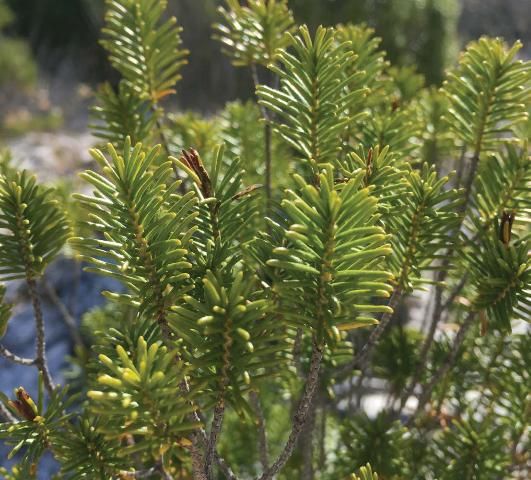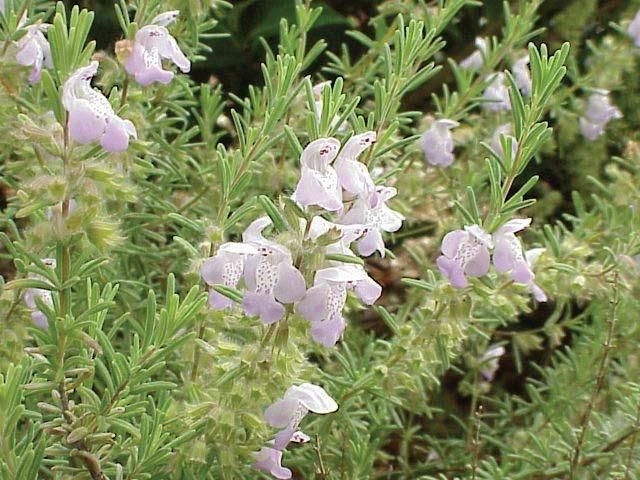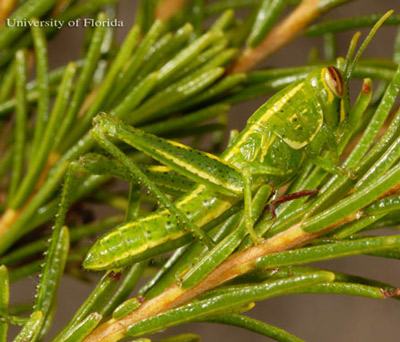Rosemary is one of those tough, multi-purpose plants that I’ve come to not just love, but respect. It looks docile enough, but that great-smelling herb on your porch is also capable of serious chemical warfare.
There are two native species we call rosemary found commonly in our dry, sandy habitats, at the beach and in upland scrubs and forests. Neither of these is the culinary rosemary (Salvia rosemarinus) typically grown in herb gardens—that’s from the Mediterranean—but ours are similar.

In northwest Florida, we have Florida rosemary (Ceratiola ericoides) and false rosemary (Conradina canescens). While Florida rosemary is a deep evergreen color year-round and most resembles culinary rosemary, it is not terribly aromatic when crushed. The plants grow in rounded mounds, and are extremely salt, drought, and heat tolerant. Florida rosemary’s yellow flowers are present from spring to early fall. The needles are similar in shape to a fir tree, growing upright and firm to the touch.

False rosemary is actually a type of scrub mint, and grows in the same habitat as Florida rosemary. It is softer to the touch and lighter in color—the needles are a pale green and the flowers are lavender (as are those of culinary rosemary). To me, false rosemary has a much stronger, more “rosemary-like” scent than Florida rosemary and could be used for cooking. On the internet (including in IFAS publications), you will see contrasting descriptions of the level of scent for these species. However, in my field experience (and that of several Extension colleagues), we find false rosemary to be the most aromatic.
Both Ceratiola and Conradina play important roles in dune ecology. Their mats of woody roots help stabilize the loose sand of vulnerable barrier islands. Their flowers are important for pollinator species, particularly bees.
As for the “chemical warfare” I alluded to earlier, Florida rosemary is one of several native species known to be allelopathic. Allelopathy is a strategy by which plants secrete chemicals through their root systems that seep into the surrounding soils. The Florida rosemary produces ceratiolin, a compound that works like a natural herbicide to prevent growth of any competing species around them. This enables their own successful growth and that of any offspring. You may have noticed that rosemary shrubs often grow in clumps set slightly apart from other species—this is why! Other plants basically cannot enter the underground force-field created by the rosemary plants.

In central Florida’s sandy ridges, Florida rosemary also has a few closely associated insect species. The bright green coloration of the rosemary grasshopper allows it to hide in plain sight within the plants. The grasshopper’s diet consists solely of Florida rosemary leaves. Wolf spiders and the rarely-seen cotton leafhopper also live among the rosemary; with the leafhopper eating its flowers and the spider burrowing in the open sandy area around the shrubs.
- Green Anoles - July 11, 2025
- The Praying Mantis - June 20, 2025
- Bluebirds in Florida - May 8, 2025
